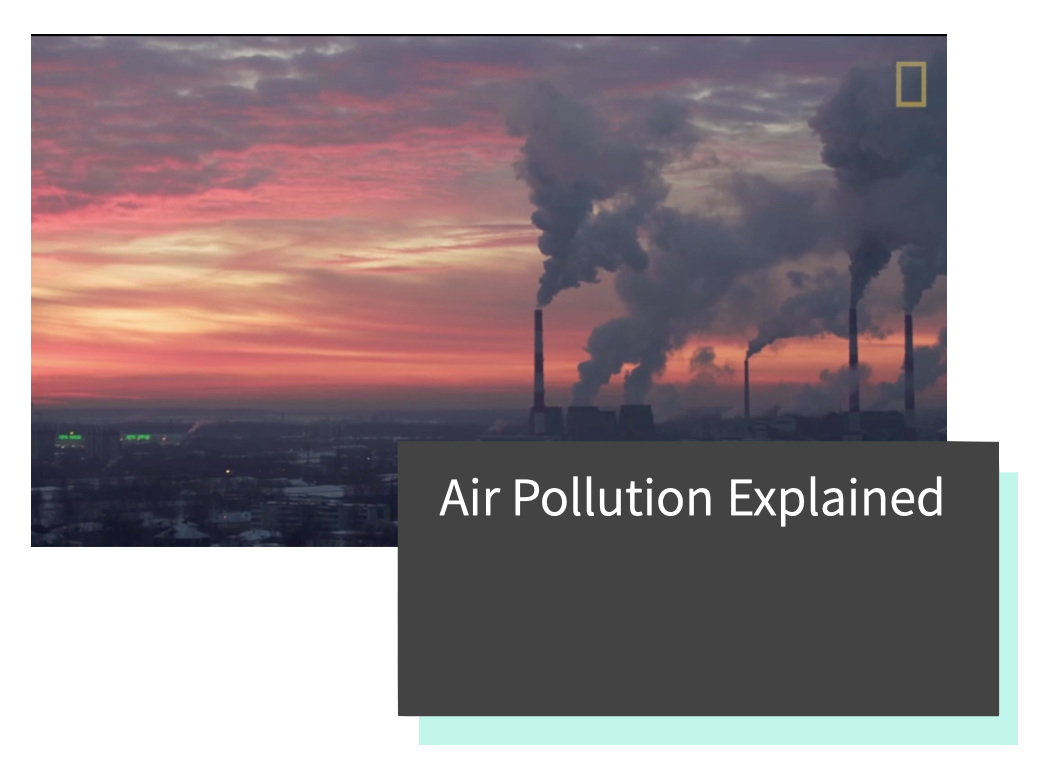So you want to learn about pollution.
Pollution is a change to the environment that has a negative effect on living things. The three main types of pollution are air, land and water.
Air Pollution
Air pollution is when unwanted chemicals, gasses and particles enter the atmosphere causing harm to living things and damaging the natural cycles of the Earth. Though there are some natural causes of air pollution such as forest fires and volcanic eruptions, most of it comes from humans. The biggest man-made pollutants are from mobile sources (cars, planes, trains, trucks) and stationary sources (power plants, oil refineries, industrial facilities, factories). Livestock account for about 40% of global emissions, mineral fertilizers for 16% and crop residues for about 18%. Some household products that are also harmful to the atmosphere are glues, cleaning supplies, cigarettes, and air fresheners. Air pollution can make people sick by causing eye and throat irritation and breathing problems. Did you know that the smoke over Los Angeles can be seen by astronauts in space.
Water Pollution
Water pollution is the contamination of bodies of water, usually as a result of human activities. Household sewage, water and human waste that are washed down sinks, toilets and showers, is a common water pollutant along with agricultural and industrial waste. It is estimated that about 998 million tonnes of agricultural waste is produced yearly. And if you haven't been living under a rock, you've probably heard about the Great Pacific Garbage Patch. For those who don't know though, the Great Pacific Garbage patch is the largest waste area in the world. It is located in the middle of the Pacific ocean (hence the name), and is continuously growing due to the currents dragging out our litter. The currents meet in between the US West Coast and Asia, where the patch is now too large to be contained.
Land Pollution
Land pollution is defined as anything that damages or contaminantes the land. That includes farming, mining and poor garbage disposal. Land pollution destroys animal habitats and turns our beautiful planet into a toxic wasteland. One of the biggest land pollution factors are landfills. Around 40% of the lead in landfills is due to the improper disposal of computers and other electronic equipment.
Some easy ways everyone can help is by reducing, reusing and recycling. We can use solar power and wind energy to reduce electricity and use reusable containers instead of plastic ones. We can also work on using more energy efficient cars.





